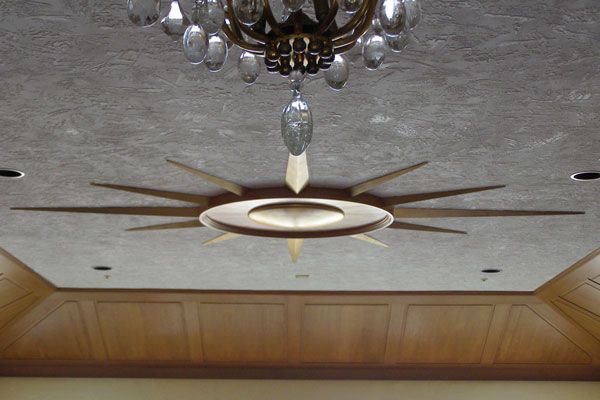Jars of jelly may be the reason Steve Portner is the woodworker he is today.
Years ago his wife was looking to buy a jelly cupboard until Portner felt he could do better for cheaper.
He set out to build his first jelly cupboard to save about $45. But he was bitten by the building bug.
“I get a dose of humility every morning when I wake up and see it,” Portner said.
Since 2006, he’s taken his passion for woodworking to the next level through All in Wood, a business that rarely makes the same thing twice. He makes fireplace mantels, entertainment centers, light switch plates, mailboxes, doors, picture frames and furniture, along with doing repairs and plenty more.
“I’m a form follows function guy,” he said. “I don’t do anything strictly art. You can utilize it but it’s arts and crafts.”
In fact, much of his work fits the mindset behind the Arts and Crafts movement, which began in the 1860s, with a new focus on traditional craftsmanship and simplicity.
“The whole idea is to bring back some of the workmanship idea of work by hand,” Portner said. “It’s as much spiritual as a mental well-being.”
The movement died out around the turn of the 20th century due to competition from mass production.
“There’s a certain ethos there and I try to include some of that hard work in all of my stuff, like one of the hallmarks (of arts and crafts) is exposed joints or hand beveling,” Portner said.
Portner also wants to fit his customer’s style, so he usually goes into the home and, depending on the project, asks specific questions. If you are buying a desk, he’ll want to know which hand you write with and where you need to put a printer. “They have to look at it every day and I don’t want them to regret it,” he said.
Burst of light
One ray of inspiration came from neighbors looking to brighten a room in their house.
Portner said the couple wanted either a compass or a sunburst on their ceiling but liked the sun best.
With some sketches and dimensions defined, the sunburst is created all by hand and pieced together for easy installation and removal.
Portner started with the outer ring. He determined the diameter of the piece and its depth — he didn’t want the center to protrude too far from the ceiling. From there, he created the fan, the middle part of the piece that hides the screws and connectors holding the pointed rays and the dome.
He pieced together multiple sections of wood to create the circle and a layered look.
For the sunburst, he created a jig for his saw to cut an angle more acute than 45 degrees to create the four large rays and eight smaller ones.
To create the golden look, he applied Dutch metal, a version of gold leaf. Portner first placed a primer over the rays and eventually the whole outer layer, covering the wood grain. Then he applied an adhesive. He said the Dutch metal tears easily so he brushes it on to keep a smooth look.
For the dome, Portner glued together multiple blocks of wood into the rough dome shape before turning it on his lathe and gilding it.
At installation, Portner set up scaffolding for the 10-foot ceiling and first attached the outer ring to the ceiling joists with screws. The sun rays are screwed into the outer ring, followed by the fan. The final touch saw the sun dome spun on with a threaded nut.
The sun is just one example of Portner’s passion for wood projects and why he plans to keep going.
“It’s something I’m good at and I’m still learning a lot about it every day,” he said.
Building a business
Portner grew up in the trades as a roofer and maintenance worker before becoming a baggage handler for Northwest Airlines, now Delta, for 19 years. In 2004, he and his family moved to the Sequim area where he built his home and shop with a plan to grow his business.
But a few years later with the declining economy, Portner said the phone stopped ringing so he’s taken on an array of woodworking jobs.
“By time people get to me to do anything in their house, it’s two or three years after they move in,” he said.
He’d like to focus on smaller projects and crafting freestanding furniture, but Portner said he takes everything he can get his hands on.
Although Portner is meticulous and experienced, he believes anybody could do what he does. Some of his smallest works, switch plates and mailboxes, are simply designed and can be made with Internet templates. For all woodworkers, he recommends connecting with fellow craftsmen and clubs to borrow tools and talk about methods and ideas.
Portner’s shop is filled with classical music: He said it helps keep him calm because not every project goes as planned.
He buys raw material from local and online wood dealers. To make switch plates, for example, he buys from Port Townsend’s Whale Bay Woods, which specializes in wood for instruments.
This summer, Portner opens his shop up for the Sequim Studio Tour from July 19-21. He is one of 32 artists at 18 venues. For more information, visit sequimstudiotour.org.



